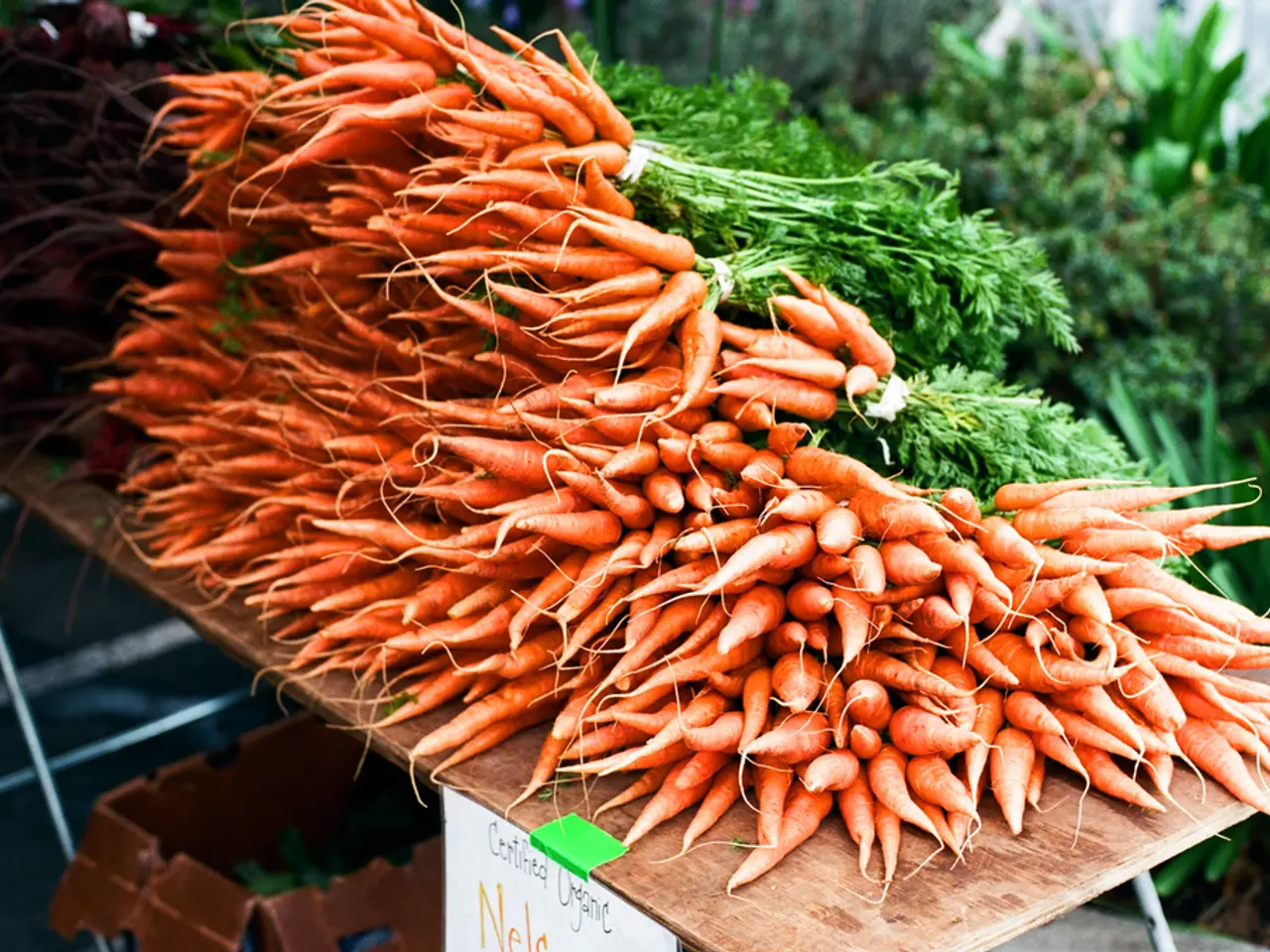Guidelines for Successful Carrot Cultivation
=====================================================
Growing your own carrots at home can be a rewarding experience, offering fresh produce and a sense of self-sufficiency. Here's a comprehensive guide to growing different types of carrots, from soil preparation to harvesting.
Soil Preparation
To ensure good root development, use loose, well-drained, fertile soil with a pH between 6.0 and 6.8. Avoid heavy, rocky, or compacted soils where possible, but varieties like the Danvers carrot can tolerate heavier or rocky soils better than most. Remove stones and break up clods to prevent forked or deformed roots. Do not use fresh manure as it can cause root malformation and increase pest risks. Amend soil with compost before planting for nutrient enrichment and moisture retention.
Spacing and Planting
Thin seedlings to about 2 inches apart once they are a couple of inches tall to reduce competition and improve root size. For round carrots like Paris Market, which are smaller (1–2 inches diameter), they suit containers or shallow soils and can be spaced somewhat closer. Plant seeds about ¼-inch deep; keep soil moist until germination.
Care
Apply mulch once seedlings are established to suppress weeds and retain soil moisture, especially in warm weather where soil dries quickly. Water carrots regularly, providing about an inch of water per week during dry periods. Keep the carrot patch free of weeds to prevent competition for nutrients and moisture, which encourages faster and healthier root growth.
Growing Different Types
Purple carrots (e.g., Purple Haze) require similar conditions and benefit from loose, fertile soil and full sun. They are rich in antioxidants. Yellow and white carrots follow the same general cultivation rules as orange carrots—well-drained soil and adequate spacing. Round carrots like Paris Market or Parisian are perfect for small gardens or containers and tolerate shallow or rocky soil better than long varieties.
Preventing Carrot Root Fly
Carrot root fly larvae damage roots; prevention includes physical barriers like fine mesh or fleece covers over young plants, crop rotation, intercropping with companion plants like onions, maintaining plant health, and avoiding disturbances near the carrot patch during adult fly activity.
Container Growing
Carrots do well in containers, especially in heavy or stony soil. Ensure the container has drainage holes and use a suitable potting mix. Water carrots in containers more often, especially in dry weather.
Harvesting and Storage
Carrots can be harvested around 10-16 weeks after sowing. Lift them when the soil is moist, so they don't break apart when pulled. Storing carrots in a clamp made using horticultural sand and straw can protect the crop from frost and make harvesting easier.
Following this holistic approach, adjusted to carrot type and local conditions, will encourage a rich, diverse carrot harvest with minimized pest issues. Happy growing!
Adopting a proper lifestyle that includes gardening and focusing on home-and-garden activities can lead to the rewarding experience of growing your own carrots. The method, from soil preparation to harvesting, plays a significant role in carrot cultivation, as one needs to ensure loose, well-drained, fertile soil for ideal root development.




